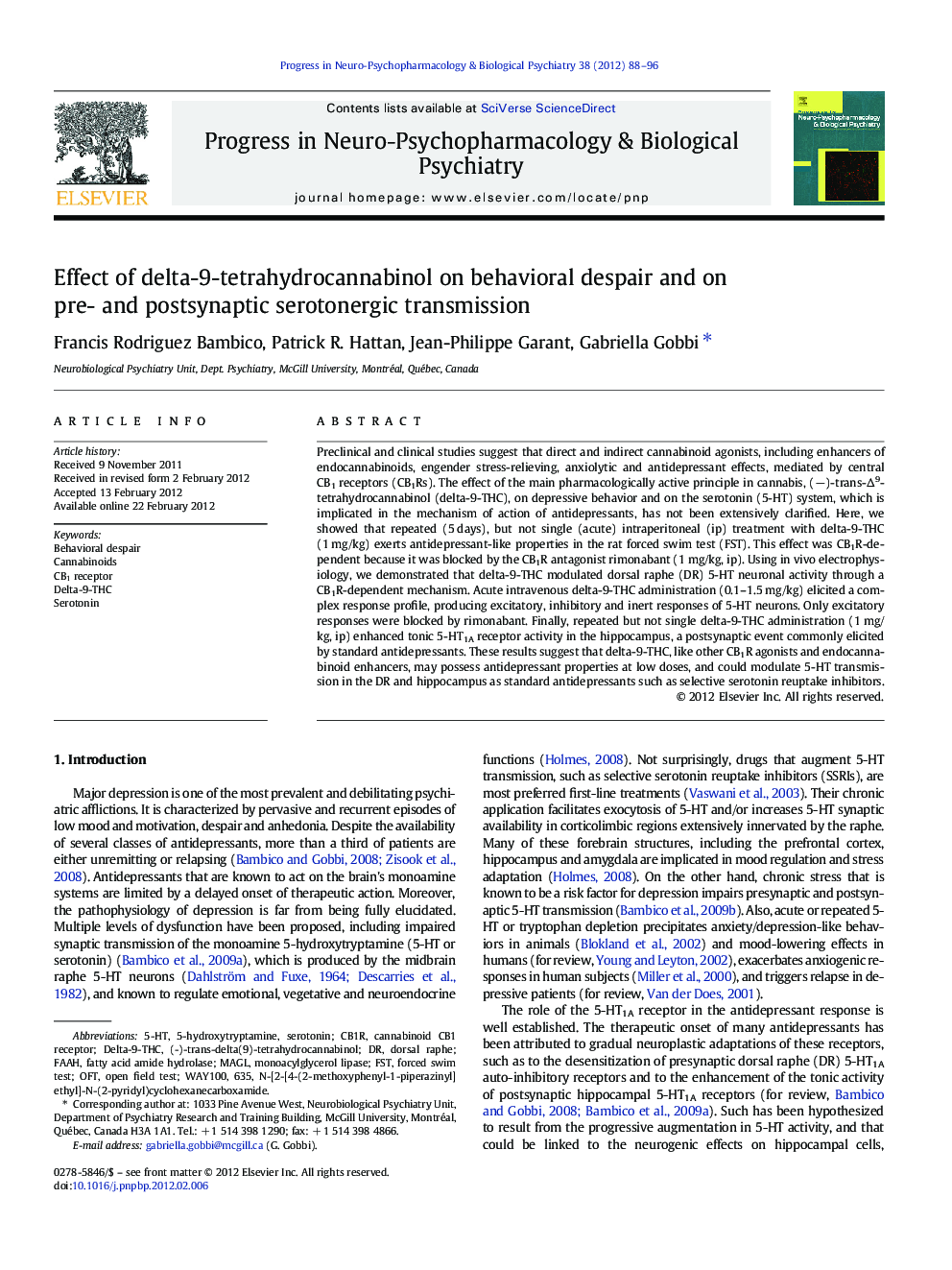| Article ID | Journal | Published Year | Pages | File Type |
|---|---|---|---|---|
| 2565066 | Progress in Neuro-Psychopharmacology and Biological Psychiatry | 2012 | 9 Pages |
Preclinical and clinical studies suggest that direct and indirect cannabinoid agonists, including enhancers of endocannabinoids, engender stress-relieving, anxiolytic and antidepressant effects, mediated by central CB1 receptors (CB1Rs). The effect of the main pharmacologically active principle in cannabis, (−)-trans-Δ9-tetrahydrocannabinol (delta-9-THC), on depressive behavior and on the serotonin (5-HT) system, which is implicated in the mechanism of action of antidepressants, has not been extensively clarified. Here, we showed that repeated (5 days), but not single (acute) intraperitoneal (ip) treatment with delta-9-THC (1 mg/kg) exerts antidepressant-like properties in the rat forced swim test (FST). This effect was CB1R-dependent because it was blocked by the CB1R antagonist rimonabant (1 mg/kg, ip). Using in vivo electrophysiology, we demonstrated that delta-9-THC modulated dorsal raphe (DR) 5-HT neuronal activity through a CB1R-dependent mechanism. Acute intravenous delta-9-THC administration (0.1–1.5 mg/kg) elicited a complex response profile, producing excitatory, inhibitory and inert responses of 5-HT neurons. Only excitatory responses were blocked by rimonabant. Finally, repeated but not single delta-9-THC administration (1 mg/kg, ip) enhanced tonic 5-HT1A receptor activity in the hippocampus, a postsynaptic event commonly elicited by standard antidepressants. These results suggest that delta-9-THC, like other CB1R agonists and endocannabinoid enhancers, may possess antidepressant properties at low doses, and could modulate 5-HT transmission in the DR and hippocampus as standard antidepressants such as selective serotonin reuptake inhibitors.
